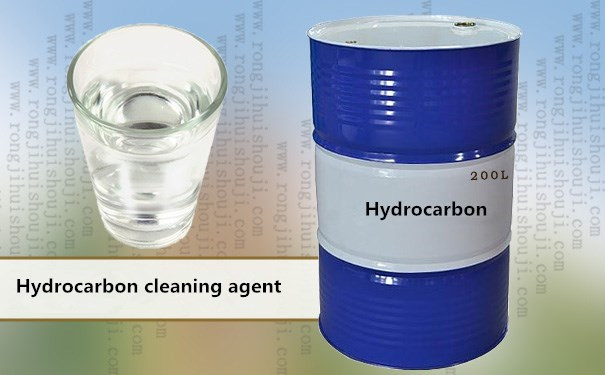3. It is suitable for cleaning all kinds of special contaminants, as well as the automatic cleaning process, and can be equipped with drying and distillation recovery equipment.
1. The product should be placed in a cool, dry and ventilated place, not with general chemicals.
2. The use of this product requires fire prevention and anti-static measures.
3. During transportation, please take care of it, do not step on it, so as to avoid product leakage and cause danger.
4. Due to its volatility, please pay attention to the safety of the cleaning environment, it is best not to be close to fire or high temperature objects.
Fire protection strategy of hydrocarbon cleaning agent
1. Control gas concentration;
a. Install external exhaust facilities
Due to the evaporation of the liquid surface of the cleaning device, the operation of taking out non-cleaning objects, containers, etc. makes the concentration of cleaning gas around the cleaning tank high, so the cleaning device is equipped with a mandatory exhaust function outside. For the open cleaning device without cover, the cleaning must be fully ventilated.
b. Use under the condition of low ignition point temperature
The temperature of the open cleaning tank should be below 15℃. This is because the alarm bell of the gas leak detector is set at 1/4 of the lower explosion limit, and the equivalent vapor pressure is converted into a temperature of about 15°C or less at the ignition point. In summer or when combined with ultrasound, the liquid temperature easily rises to 35°C, so you should choose a substance with a flash point above 50°C.
2. Cut off the ignition source
a. Isolate point sources such as sparks and open flames. b. Use explosion-proof electrical components. c. In order to prevent the accumulation of static electricity, the washing machine should be completely grounded.
3. Install gas concentration detector
The gas concentration detector monitors the leakage gas concentration at any time, and can give an alarm when the vapor concentration is close to the explosion limit;
Advantages of hydrocarbon cleaning agent
1. Good cleaning performance. Hydrocarbon cleaning agent is non-polar in petroleum fractions with most lubricating oils, anti-rust oils, and machining oils. According to the principle of similar compatibility, hydrocarbon cleaning agents clean mineral oils better than halogenated hydrocarbons and water. Based cleaning agent.
2. The evaporation loss is small. The hydrocarbon cleaning agent has a high boiling point, and the volatile loss is small during use and storage, and the sealing requirements of the packaging and equipment are very low.
3. Very low toxicity. Through toxicological tests, the absorption and discharge toxicity, oral toxicity and skin contact toxicity of the hydrocarbon cleaning agent are all ultra-low toxicity, and they are not carcinogenic substances. The cleaning operators are safer to use.
4. Good material compatibility. The hydrocarbon cleaning agent does not contain water, chlorine, sulfur and other corrosives, and will not cause corrosion and oxidation of various metal materials. Hydrocarbon cleaning agents are also non-polar solvents, and do not dissolve, swell and embrittle most plastics and rubbers.
5. Can be completely volatilized without traces. Hydrocarbon cleaning agent is a very pure refined solvent. It can completely volatilize at room temperature and under heating without any residue.
6. No damage to the environment. Hydrocarbon cleaning agent can be degraded automatically, and the cleaning waste liquid can be put into coal-fired or oil-fired boilers for incineration. The incineration products are mainly CO2 and water, which does not pollute the air. Hydrocarbon cleaning agent does not contain chlorine, and its ozone destruction coefficient is zero.




 电话:+860512-57886027
电话:+860512-57886027 邮箱:
邮箱: 地址: Room 1902, XinDuYinZuo, No. 177, Changjiang Middle Road, Kunshan, Jiangsu
地址: Room 1902, XinDuYinZuo, No. 177, Changjiang Middle Road, Kunshan, Jiangsu